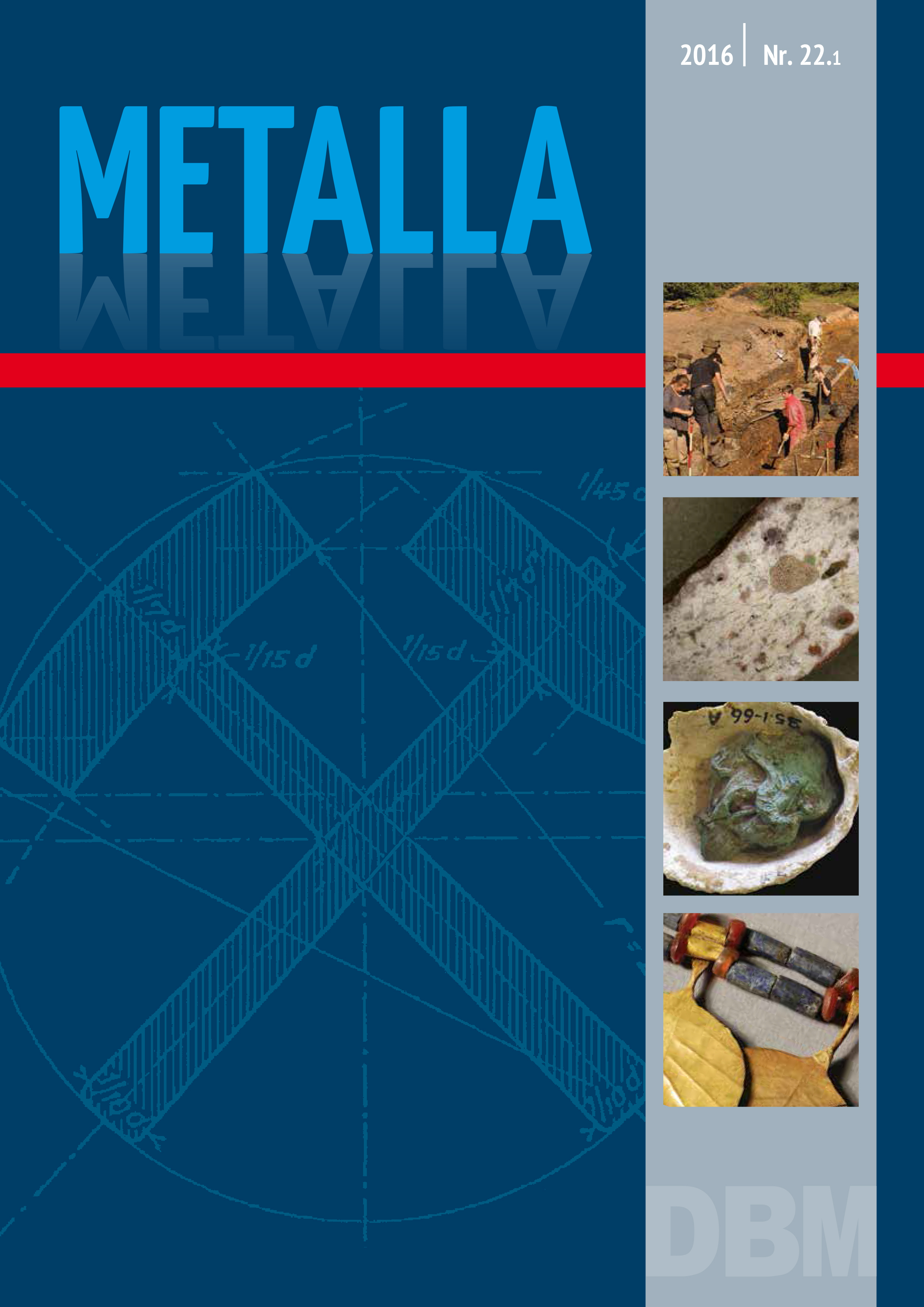Golden Artifacts from the Royal Tombs of Ur, Mesopotamia
DOI:
https://doi.org/10.46586/metalla.v22.2016.i1.84-88Keywords:
Ur, Gold, Mesopotamia, pXRF, depletion gilding, PGEAbstract
Visual inspection of the gold artifacts from Ur shows that there are variations of color and this should be to be expected with gold alloys: The gold objects of Ur appear yellowish, whitish and reddish with changing tints. Details of color variations must have been certainly well known already in early gold smithing, so that it is reasonable to assume that the different colors could have been produced deliberately. In order to find out the causes of this differences in coloration a first stage of the larger joint venture between the Penn Museum, the Deutsches Bergbau-Museum Bochum, the Goethe-Universität Frankfurt and the British Museum was initiated. As a result a series of non-destructive elemental analyses on selected gold and silver objects was performed in 2009 at the Penn Museum. The results are divided into four parts exploring different aspects of the analysis of the gold objects: tarnish and corrosion, chemical composition, depletion gilding and inclusions of PGE's.
Downloads
Published
Issue
Section
License
Copyright (c) 2016 Andreas Hauptmann, Sabine Klein

This work is licensed under a Creative Commons Attribution 4.0 International License.



